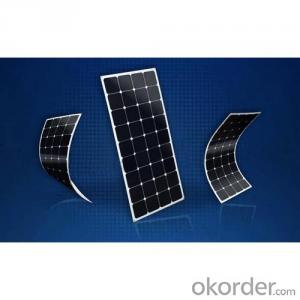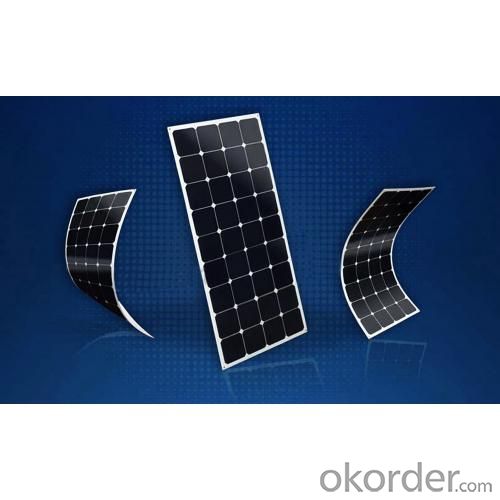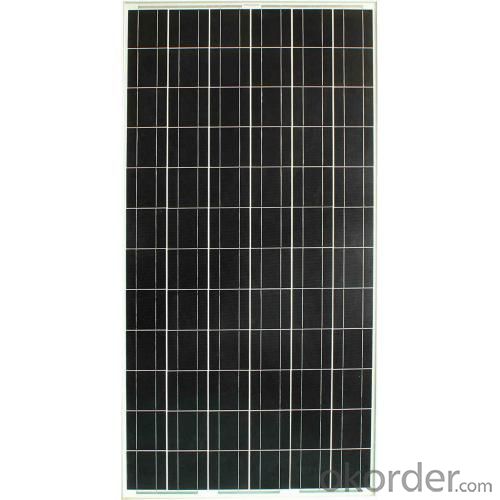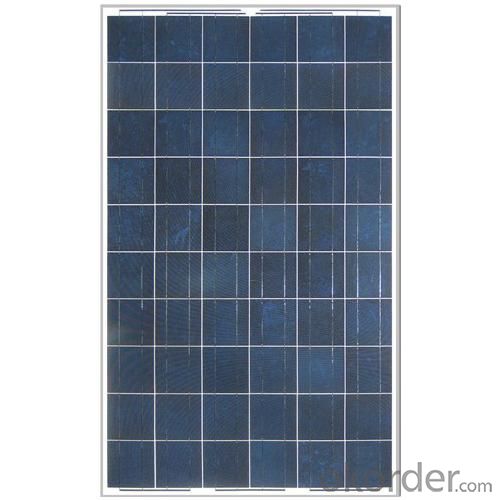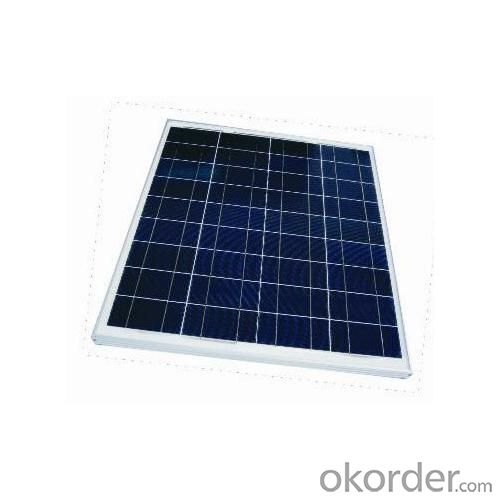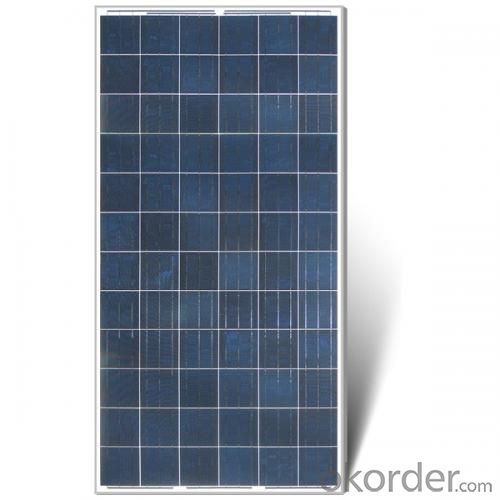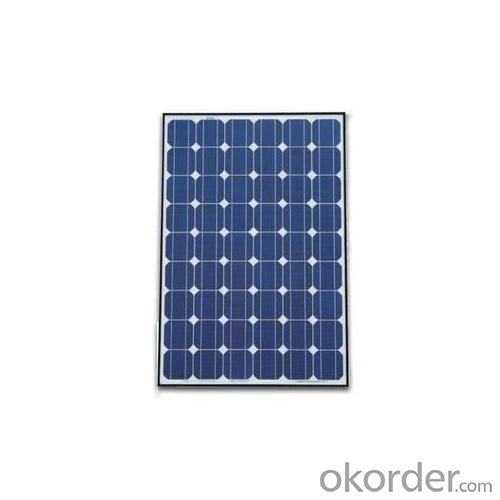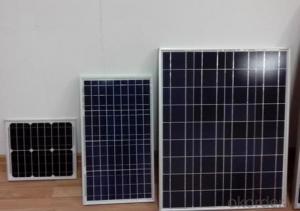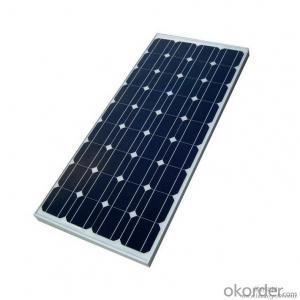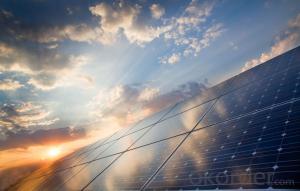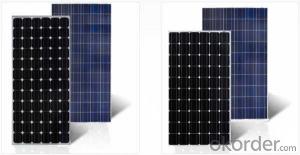Standing Solar Panels - Solar Polycrystalline 156mm Series (100w-120w)
- Loading Port:
- Shanghai
- Payment Terms:
- TT OR LC
- Min Order Qty:
- 1000 watt
- Supply Capability:
- 20000000 watt/month
OKorder Service Pledge
OKorder Financial Service
You Might Also Like
Specification
1.Structure of Solar Module Description
Solar Polycrystalline 156mm Series (100W-----120W)
2.Characteristics of the Solar Module
| Max Power Voltage Vmp (V) | 17.8 | 18.4 | 17.8 |
| Max Power Current Imp (A) | 6.18 | 6.52 | 6.74 |
| Open Circuit Voltage Voc (V) | 22.4 | 23.0 | 22.4 |
| Short Circuit Current Isc (A) | 6.61 | 6.97 | 7.21 |
| Max Power Pm(W) | 100 | 110 | 120 |
3.Limits of the Solar Module
Operating Temperature ﹣40℃to+85℃
Storage Temperature ﹣40℃to+85℃
Max System Voltage 700V
4.Specifications of the Solar Module
| Power | 100W | 110W | 120W |
| Dimension | 1120x670x30mm | 1190x670x30mm | 1330x670x30mm |
| Weight | 9.1kg | 9.5kg | 10.6kg |
| Tolerance | ±3% | ±3% | ±3% |
The dimension of the modules can be changed according to the demand of clients
5.Guarantee of the Solar Module
| Products Guarantee | 2 yrs free from defects in materials and
workmanship |
| Performance Guarantee | No less than 90% within 10yrs and no less than 80% within 20yrs |
| Certificates | IEC,ISO,TUV,CE |
6.Applications of the Solar Module
1.Electricity
2.Heat energy
7.IMages of the Solar Module
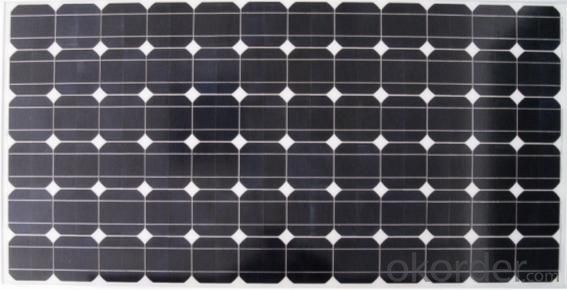
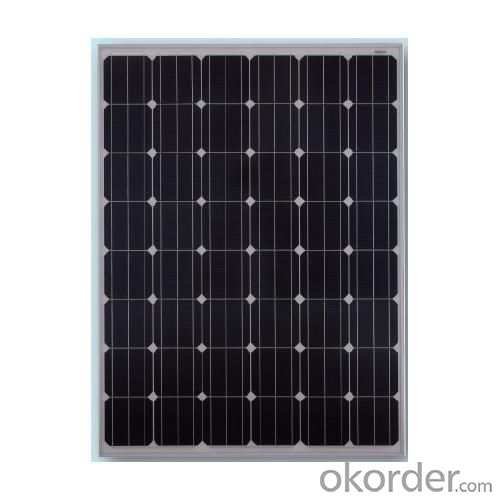

FAQ
1. Q: Do you have your own factory?
A: Yes, we have. Our factory located in Jiangyin city, jiangsu province.
2. Q: How can I visit your factory?
A: Before you take off from your country, please let us know. We will show you the way,or arrange time to pick you up if possible.
3. Q: Do you provide free sample?
A: Usually we do not offer free sample
4. Q: Could you print our company LOGO on the nameplate and package?
A: Yes, we can do that.
- Q: I am building a solar panel I have wired in series 36 .5 volt solar cells to produce 8 volts I have another panel that has 34 .5 volt solar cells to produce 7 volts. Any issues with wiring these 2 arrays in Parallel? I.E. would the smaller array take usable power away from the larger array?
- yes, i suggest u connect in parallel
- Q: I want to buy a solar panel to charge deep cycle batteries and charge electronics off the DCB. I don't know how to wire everything up though or what materials ill need. Inverter? Gauge of the wire? Ampmeter?
- the solar panel should state it, you dont need a inverter to charge, only to use the power from the cell.you do need an amp regulator, so it tells if the battery is on full charge and so the sun doesnt over power the battery through the solar panel
- Q: Can solar panels be installed on a factory or industrial facility?
- Yes, solar panels can be installed on a factory or industrial facility. In fact, many factories and industrial facilities are increasingly adopting solar power as a sustainable and cost-effective energy solution. By installing solar panels, these facilities can reduce their reliance on traditional electricity sources, lower their carbon footprint, and potentially save on energy costs in the long run.
- Q: How do solar panels convert sunlight into electricity?
- Solar panels convert sunlight into electricity through the photovoltaic effect. When sunlight hits the solar panels, it interacts with the semiconductor material, usually made of silicon, which causes the electrons to be excited and flow freely. This flow of electrons generates an electric current, which can be harnessed and used as electricity.
- Q: Are photovoltaic cells the same as solar panels?
- Homemade okorder /
- Q: want to add solar panels to manufactured home, and we get a lot of snow up here in the NW. Wondering if it would interfer with the roof load.
- A single hexagonal solar panel weighs around 0 to 2 pounds (see link). A conventional silicon solar panel might weigh 40 pounds.
- Q: Dose a solar panel need the entire range or spectrum of sunlight to produce power?
- It's a huge field of study, very important to solar cell development. People are trying to optimize spectral response for sunlight, even for sunlight in specific places. Google solar cell spectral response for many many websites. Most of them are specific to one experiment.
- Q: I want to purchase some or one solar panel for my home. I don't know where to buy them from. I've loooked online and if i could buy them online that would be best, but if you knew of a website that has good prices than that would be great!Thanks
- Are you aware of the complications that go along with installing a solar system? A solar panel might put out about 00 watts at 24 volts DC. What would you use it for. The typical solar system has a lot of panels connected in series. The output is connected to an inverter to make 20-240 volts AC. This is connected to the power grid if it is to be used. Also if it is felt that the system should provide power during an electrical outage, there will be batteries. How big would you wan it to be? Mine has forty panels with two inverters. It supplies all the electricity for the house, with some left over to supplement my gas heat. Read the Q and A in the Search box at the upper right of this page, by searching for solar panel. Also study all you can get your hands on.
- Q: China is the world's biggest producer of solar panels
- Go ahead admit it...Carter was right ! He was right in seeking to raise the fleet auto mileage standard to 48 miles per gallon by 995. (Even U.S. automakers admitted at the time that they could easily achieve 30 mpg by 985.) Carter was right in exhorting Americans to turn down their thermostats, even if he did look nerdy in a cardigan while urging us to do so. He was right to encourage fuel conservation by proposing a 50-cents-per-gallon tax on gasoline and a fee on imported oil —- in effect, a floor for fuel prices. Invoking the pioneering spirit of the 960s moon mission, he was right to recommend a tax on windfall oil profits to finance a crash program to develop affordable synthetic fuels. Carter was correct, too, in setting a goal of obtaining 20 percent of our energy from solar power by the year 2000. The solar panels Carter put up on the Whitehouse were USA made. The solar
- Q: my dad wants to run all his lights in his shop on solar panels, he has 9 600 watt hps lights. how many solar panels would it take to pull this off
- It depends on how many watts of electricity you wants..
Send your message to us
Standing Solar Panels - Solar Polycrystalline 156mm Series (100w-120w)
- Loading Port:
- Shanghai
- Payment Terms:
- TT OR LC
- Min Order Qty:
- 1000 watt
- Supply Capability:
- 20000000 watt/month
OKorder Service Pledge
OKorder Financial Service
Similar products
Hot products
Hot Searches
Related keywords
